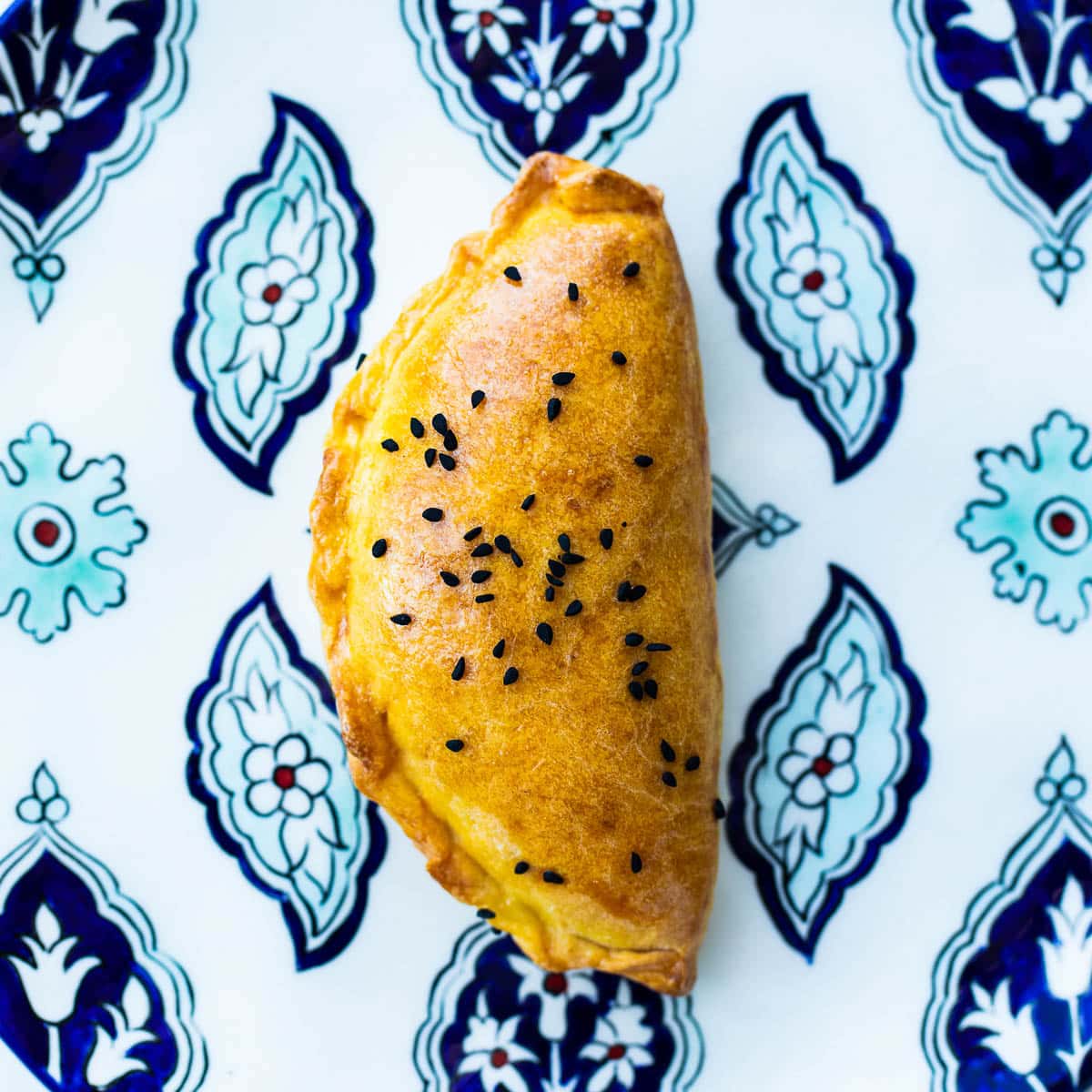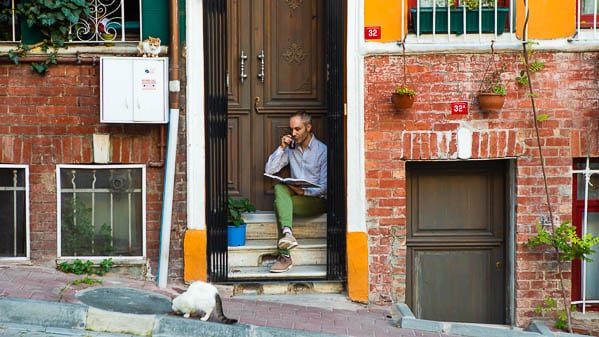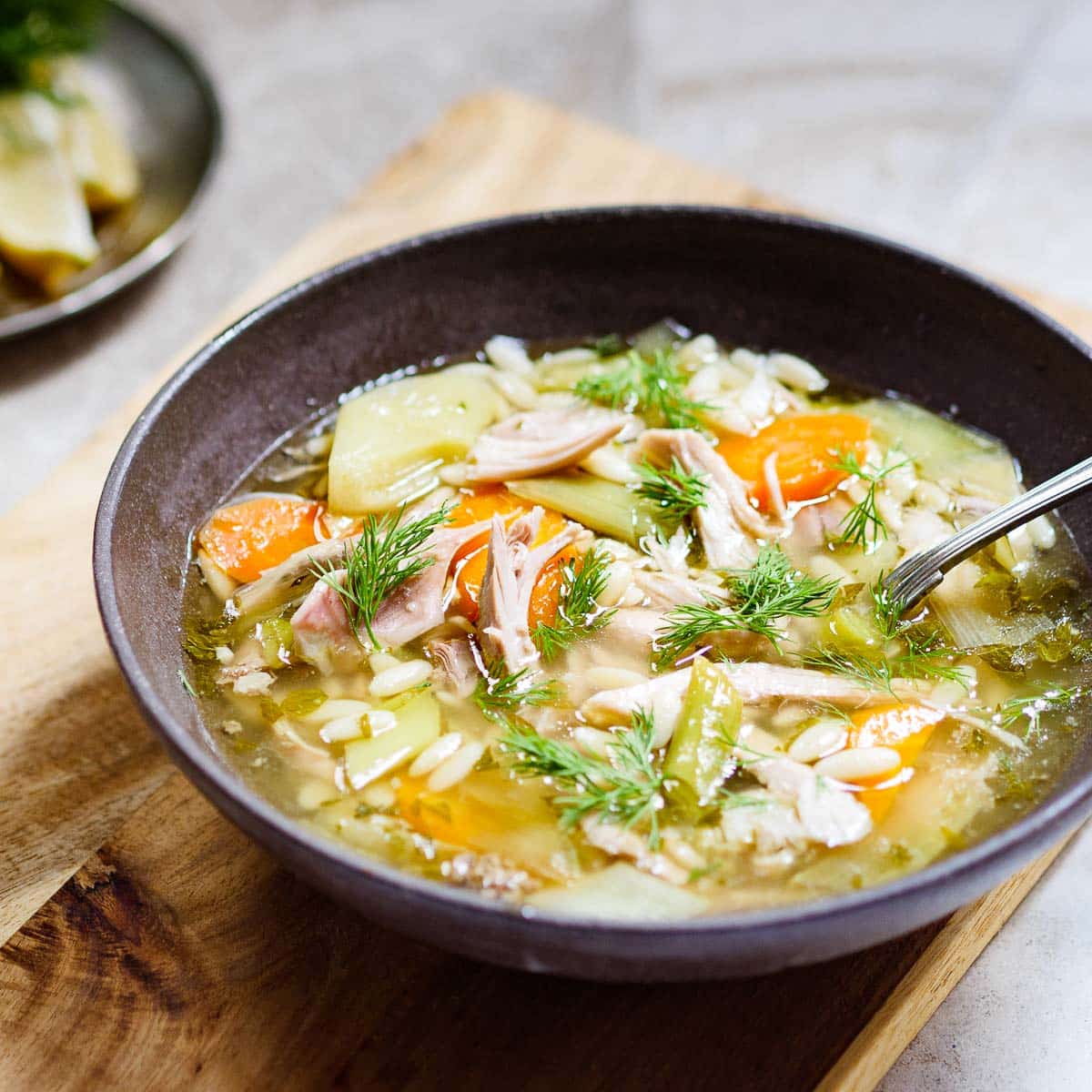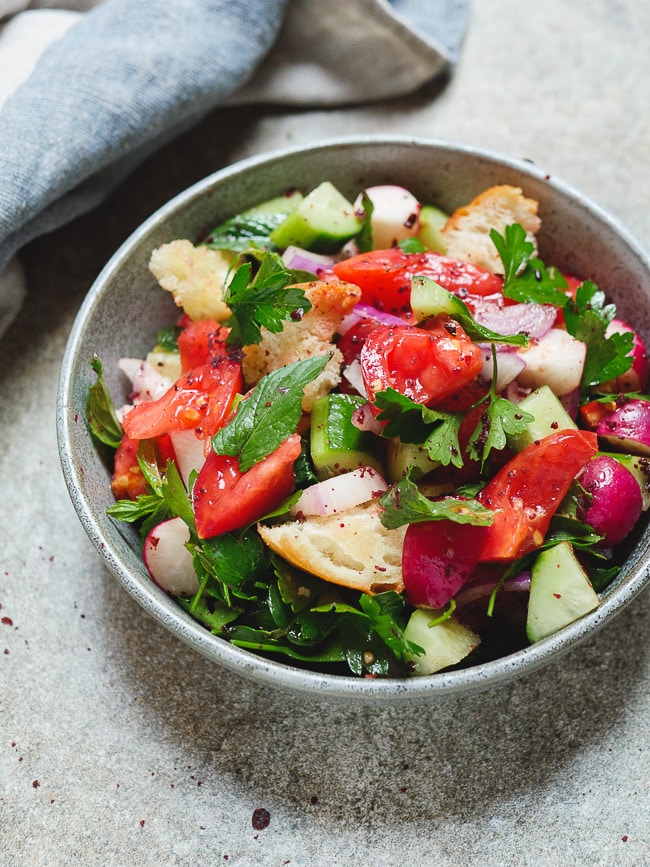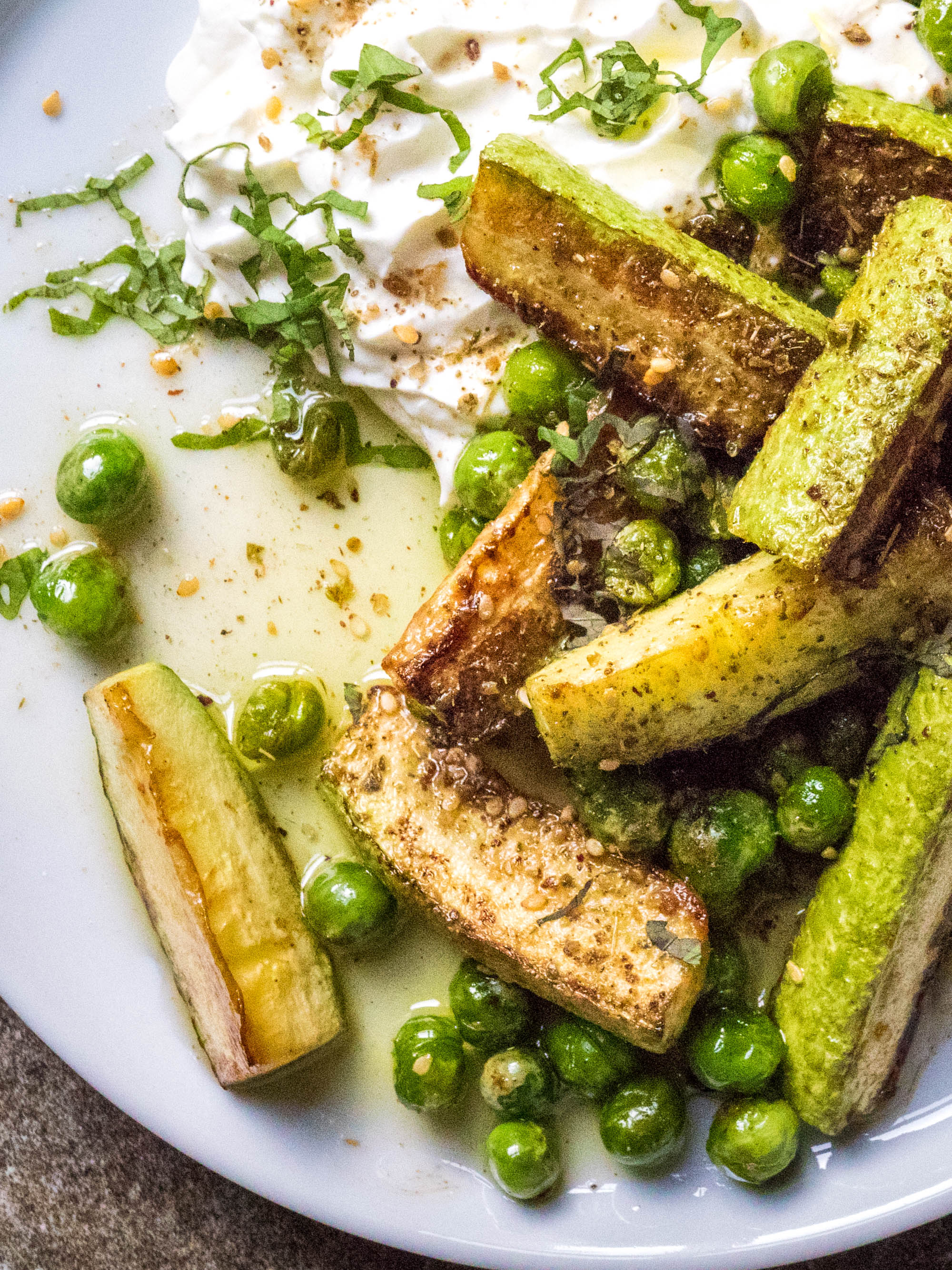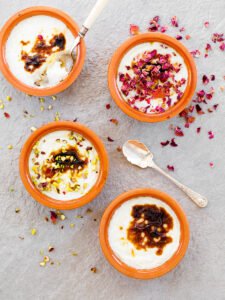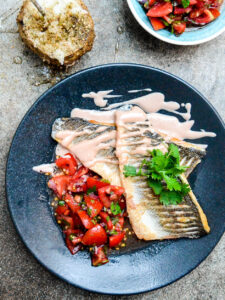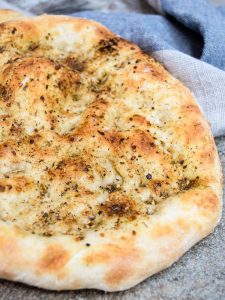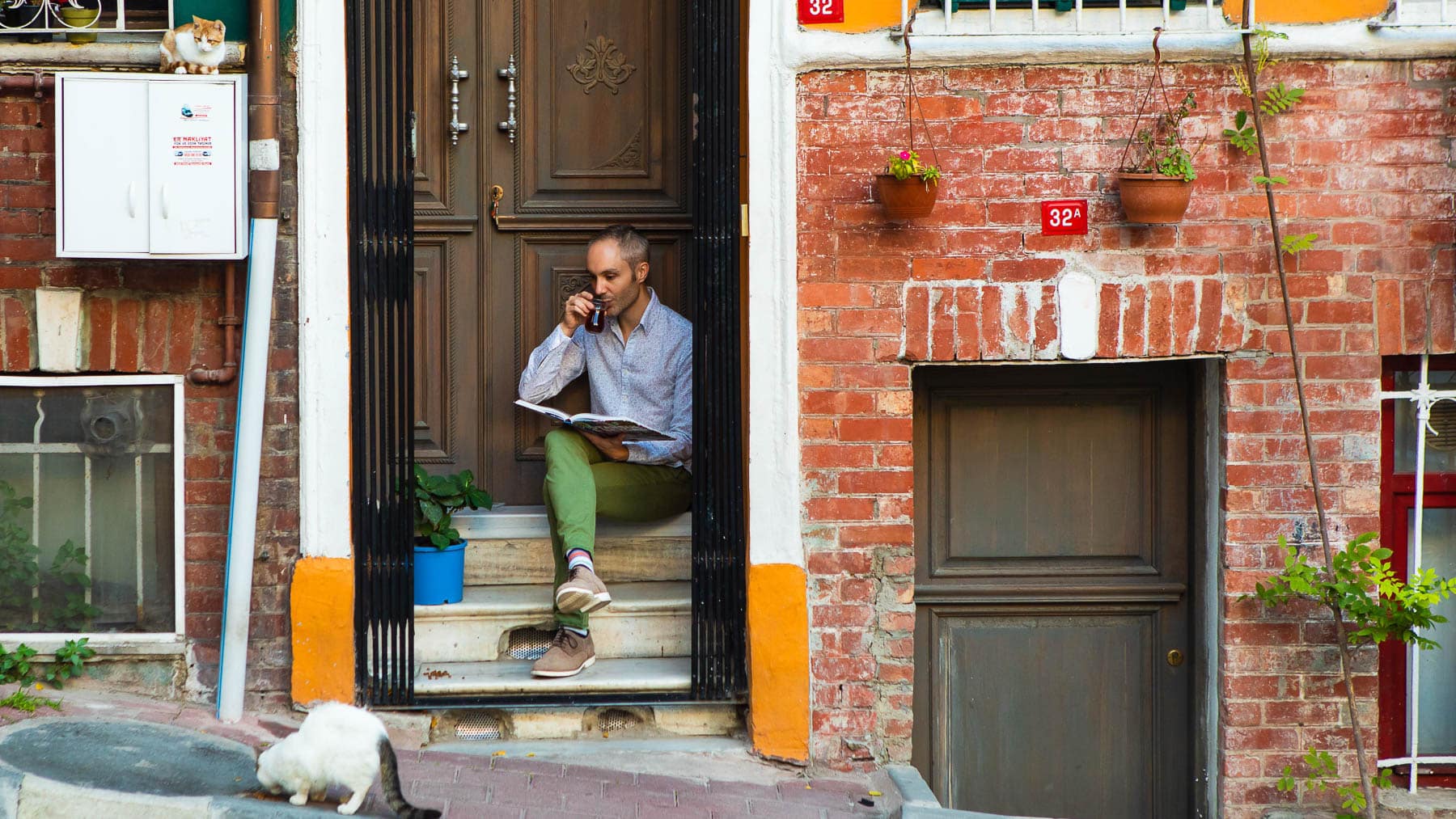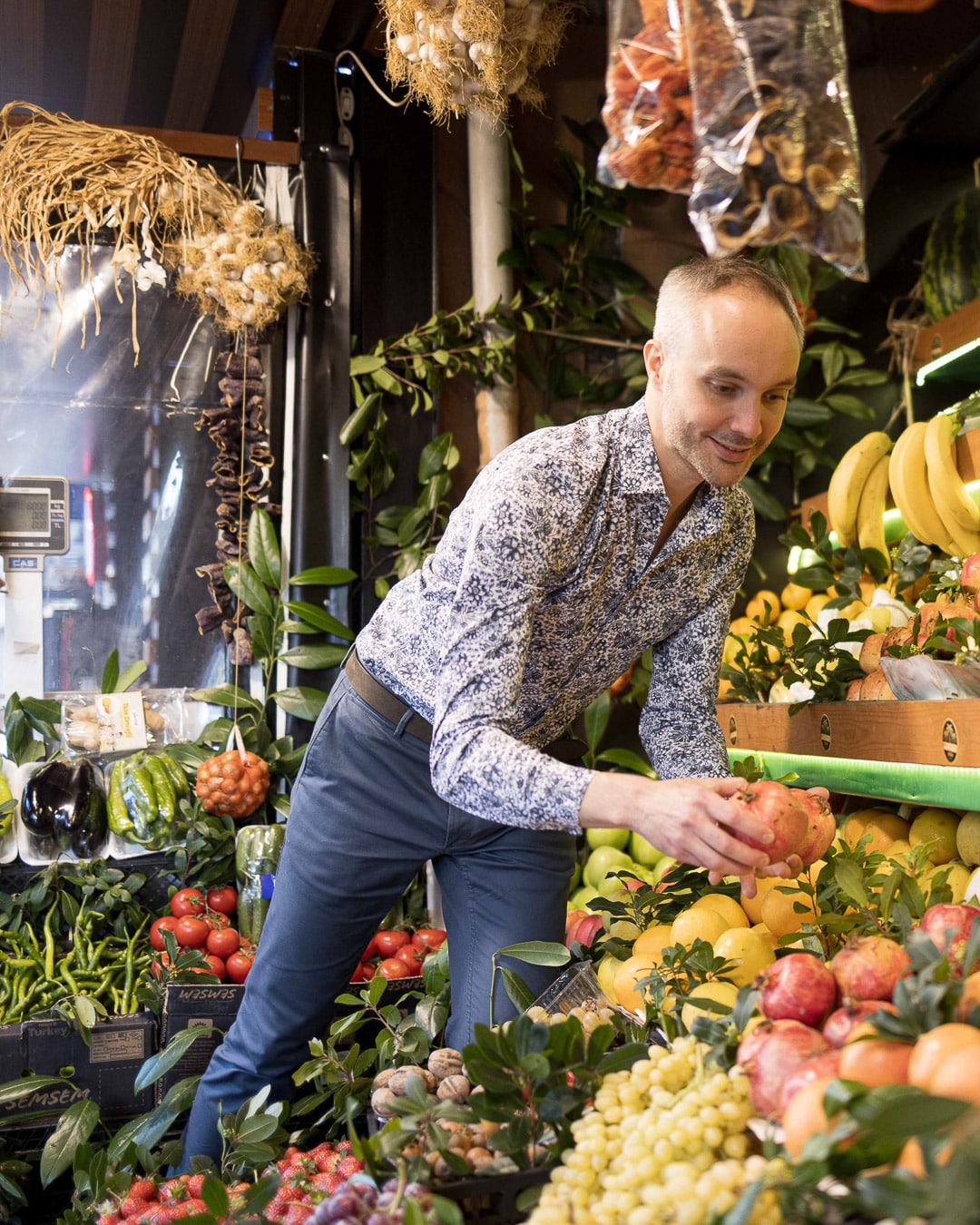There’s nothing quite like a Turkish breakfast. And I’m always happy with I see poğaça, a simple but very tasty pastry, among the selection. And at home, I often make this authentic Turkish pogaca with feta cheese for those special weekend mornings.
This recipe was first published in my newsletter Meze. That recipe also includes the story of our neighbourhood pogaca guy 🙂 Subscribe here.
This is Turkish poğaça
Poğaça is a simple and very popular golden brown Turkish breakfast pastry. It’s made from an enriched dough, making them reminiscent of scones. They’ve often god a simple filling, like cheese, potato or herbs.
Add a cup of strong black tea with a generous hand of sugar, and Turkish workers have the energy to face a day’s labour!
There are too many versions of Turkish poğaça to even attempt a count, let alone describe.
Some are yeasted and soft like buns. Others rely on baking powder, making for a more crumbly texture similar to scones. Some are stuffed, others plain. Some have lots of dill added. Some are shaped like a half moon, others are round, yet others oval.
And I’m sure there are places in this country where they have local versions with unique shapes, too.
Unfortunately, many bakeries these days opt for cheap fats to keep the cost down (a single poğaça costs only pennies).
Lucky then, that making pogaca at home with better quality ingredients is very simple!
How to make pogaca at home
In fact, it’s a great way to start the day if you’re up a little earlier than usual and have time to spend in the kitchen before the rest of the home (or just you) is ready for breakfast.
You can make a yeasted dough the night before and keep it in the fridge until the morning. But to me, the appeal of homemade poğaças is that they can be in the oven within 45 minutes of gathering my ingredients, without having to pre-plan anything.
The convenience makes me opt for the baking powder version over the yeasted ones.
How to make the pogaca dough
Like most poğaça, the dough I use is very simple. Mix the dry ingredients, add the wet ones, mix and knead for a bit.
Pogaca dough doesn’t need to be as developed as bread dough, so I tend to do it all by hand. It only takes five minutes or so.
You’ll no doubt note one unusual ingredient in the list. Mahlab is a spice made from wild cherry seeds. It’s more typically used in the Eastern regions of Turkey, and lends a deliciously nutty aroma to the poğaça.
While I love it, omitting it is perfectly fine if it’s not readily available where you live. Your poğaças will still be delicious.
The wet ingredients are yoghurt and butter. This is what gives poğaça its uniquely soft and slightly crumbly texture. I use full fat yoghurt (always). Some people prefer to use olive oil, but butter is both more authentic and tastier for this particular recipe.
The cheese filling
The filling for these poğaças couldn’t be easier to make. It’s literally just crumbled feta cheese.
Since even feta cheese melts and sometimes attempts to escape its casing during baking, I like to mix the cheese with an egg or two. This helps ensure that the filling remains inside.
If you don’t mind a bit of cheese spillage, omit the eggs.
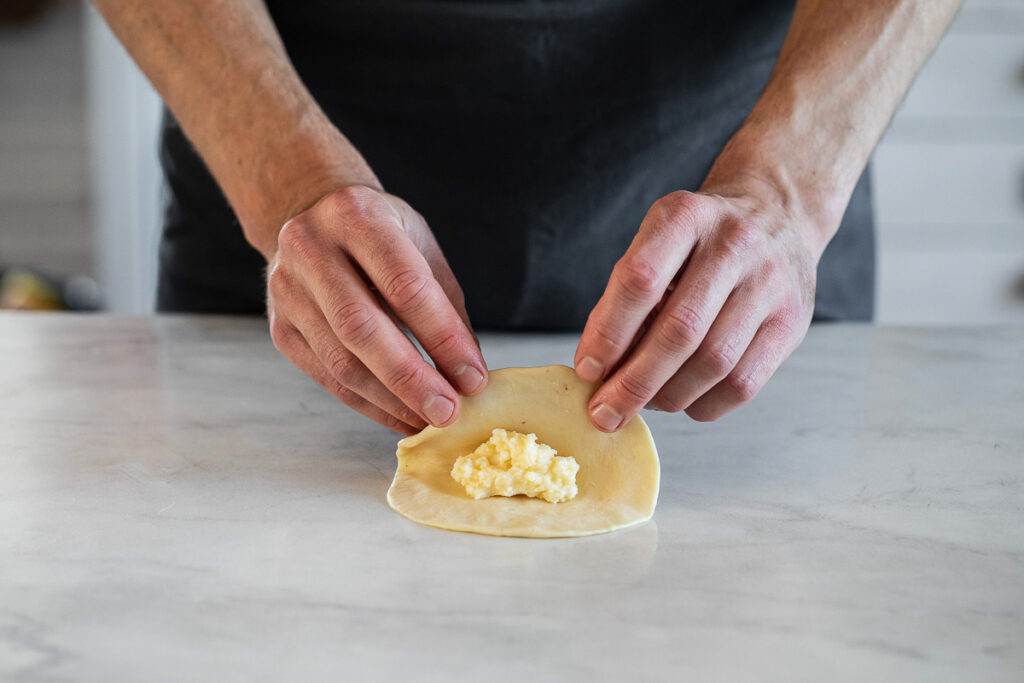
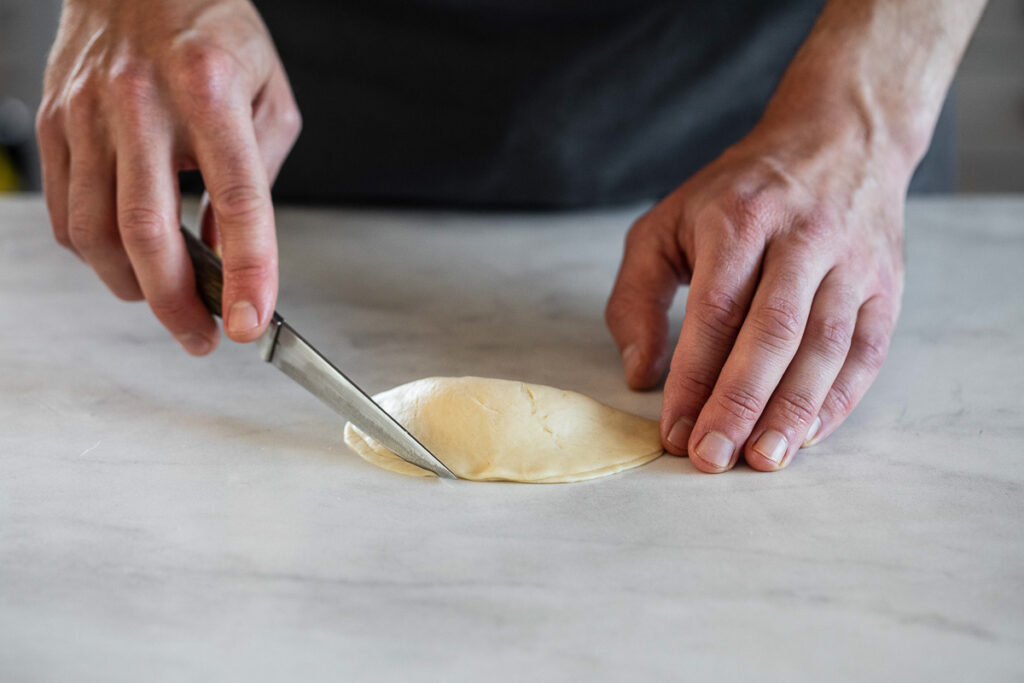
The folding
There are many ways to shape a pogaca. This is how I do it.
First, I divide the dough into dough balls of equal size. I then roll out each dough ball into little circles. These don’t have to be perfect. Finally, I place the filling in the middle before folding it over itself and sealing as best as I can.
I try to get as little excess as possible, but make sure to cut off whatever excess there is. Otherwise the pastry will be dry. You’ll now have a beautiful half moon shaped pastry. As long as the edges are completely sealed, you can consider yourself done at this point. Place the pastry onto your baking tray and continue until you’re ready to apply egg wash and bake.
Personally, I like to add a shape to the edges. This is completely optional.
Simply turn the edge over onto itself with small intervals until you have a decorative border, as per the pictures below.
Once you’re happy with it, simply brush with an egg wash made from egg yolk whisked with a little water. Top with a sprinkle of nigella seeds. If you don’t have it, you can substitute sesame seeds.
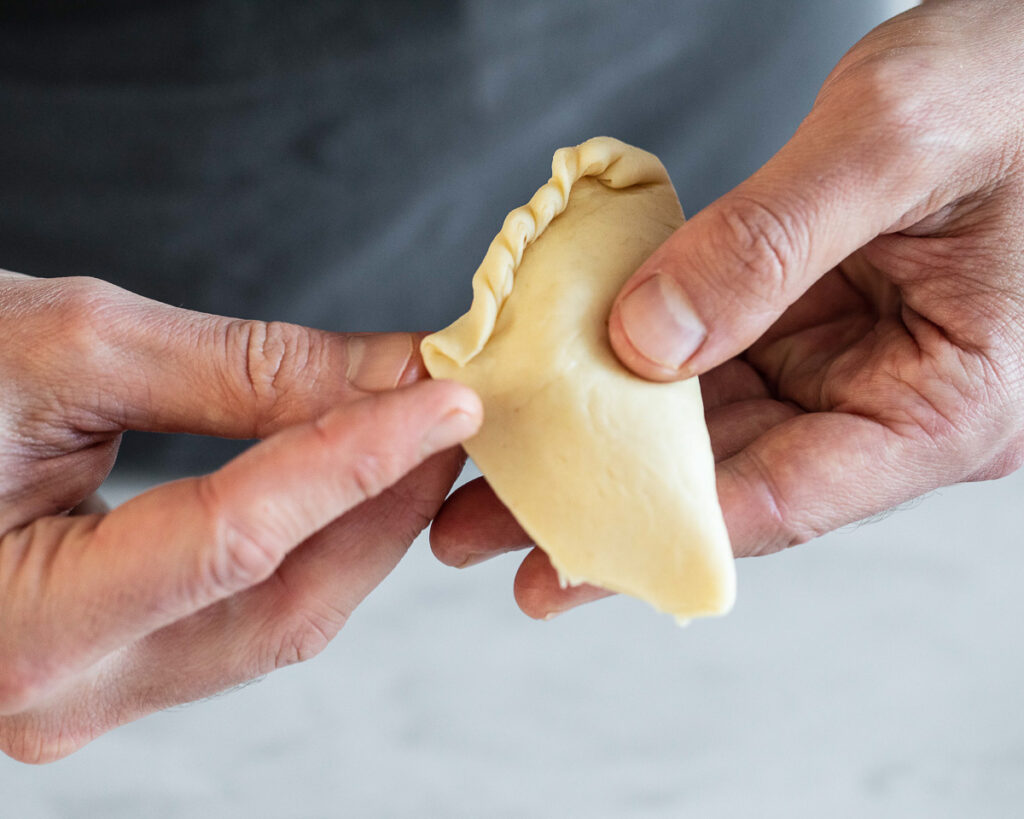
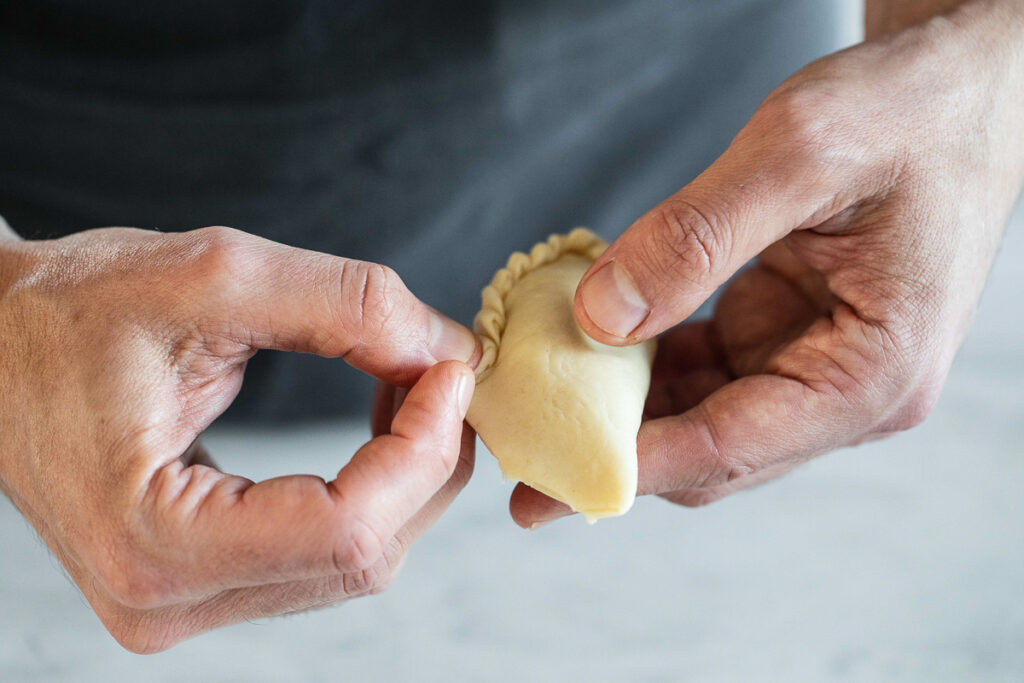
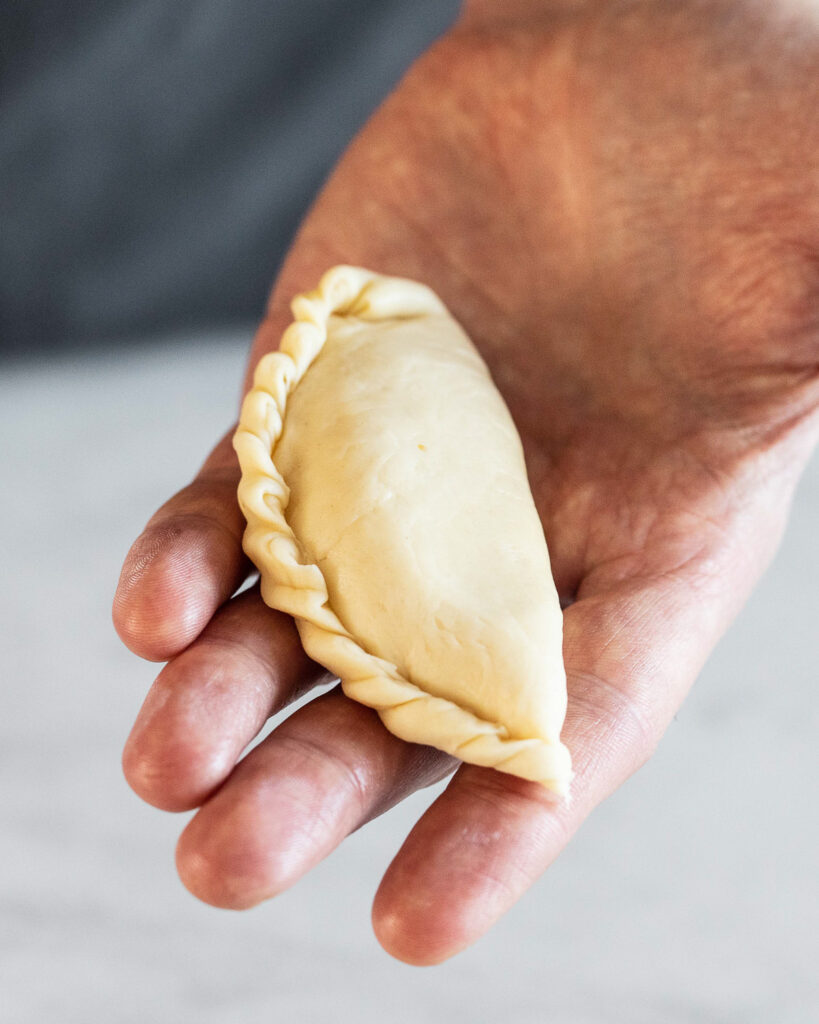
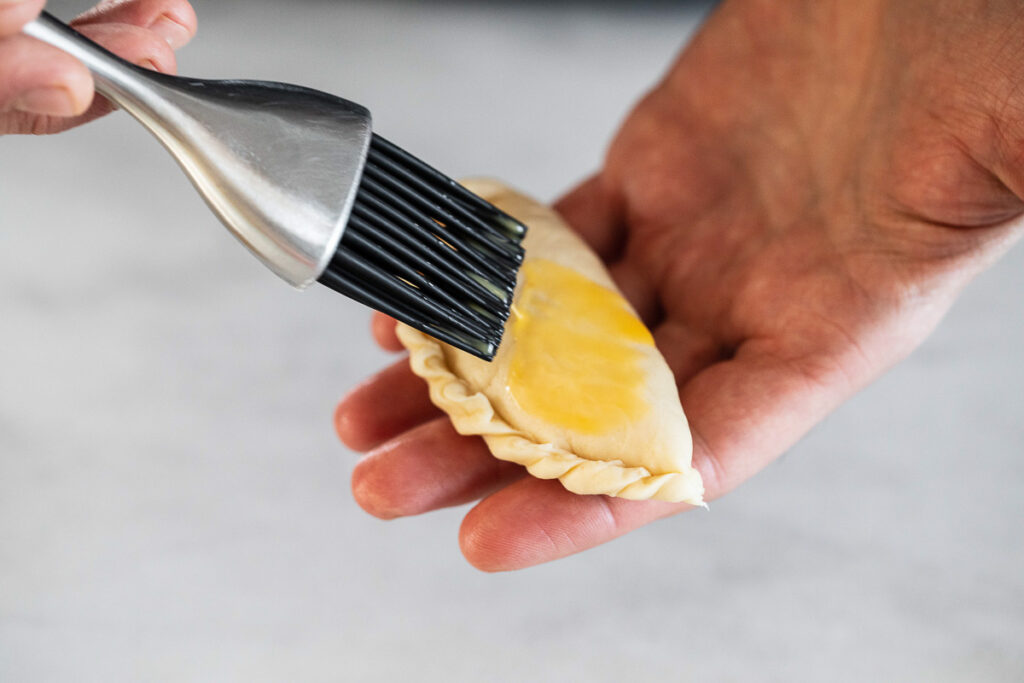
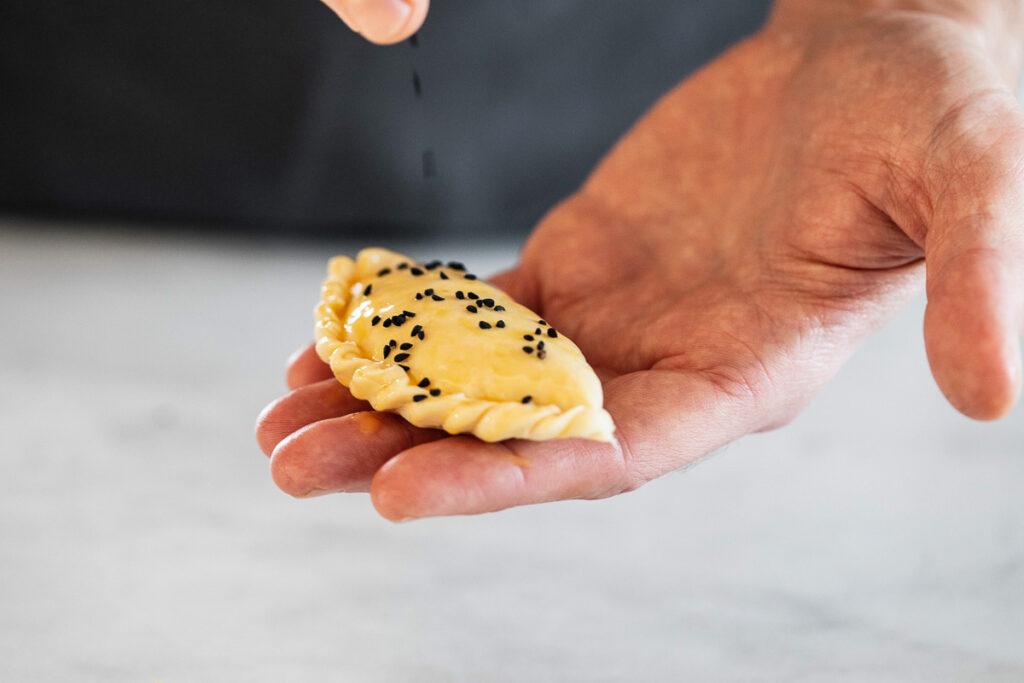
Serving suggestions
Poğaça can be eaten as is, as part of a breakfast or as a quick snack on the go.
It’s also brilliant for bringing along on hikes or picnics. Your friends will love you!
The recipe makes 16 small pastries, though be warned: Most people will eat more than one!
Other Turkish pastries
Turkish cuisine has a huge number of savoury pastries that are worth a try.
Perhaps most famous is börek. It’s available everywhere you go, but also commonly made at home. Me, O make tray börek with cheese and parsley several times a month, year-round. It’s such a comforting and delicious food! And works equally well for breakfast, lunch and even dinner.
For a more wholesome dinner, try the not authentic but stunningly delicious börek rolls with spiced lamb.
If you’ve ever been to Turkey, surely you’ve seen ladies in traditional clothes making gözleme. Another favourite of mine I can only recommend trying out!
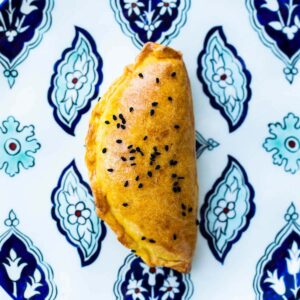
Pogaca with feta cheese (Peynirli poğaça)
Ingredients
- 500 g white flour
- 2 tsp baking powder
- 1 tsp salt
- 1 tsp sugar
- 1 tsp ground mahlab, (optional)
- 250 g natural yoghurt
- 100 g butter, melted and left to cool slightly, or equivalent olive oil
- 1 egg yolk, whisked with a few drops of water, to coat the pastry
- 2 tsp nigella seeds, or sesame seeds (optional)
Filling
- 200 g feta cheese
- 1–2 eggs, whisked (optional)
How I make it
- In a wide bowl, mix the flour, baking powder, salt, sugar and mahlab (if using). Add the yoghurt and melted butter (or olive oil). Mix well and knead until your dough is fairly soft, around 5 minutes. It shouldn’t be as developed as a bread dough, but softer than an unkneaded dough. You can use a machine for this, but I never bother. Cover and set aside for at least 20 minutes.
- Preheat the oven to
190 °C. Line a baking sheet with parchment.
- Make the filling by mixing the feta cheese and egg. The eggs help bind the filling and reduces the risk of leakage, but can be omitted for a cleaner cheese flavour.
- Divide the dough into 16 equally sized pieces (c. 55 g each). Roll into balls, then press them down until you have flat circles with a diameter of approx 10 cm (4 in). I use my hands for this, making sure the edges are a little thinner than the middle (you don't want the edges, which will be seamed together, to be too thick). If you prefer, you can use a rolling pin.
- Divide the filling among the middle of each dough piece. Fold one side over the other, so you get a half moon, pressing out the air as well as you can. Make sure to squeeze the folds together so the seam is completely closed. Trim off any excess dough along the seam. If you like, make a pattern by folding the seam over onto itself repeatedly, or by pressing down a fork. Make sure the seam isn't too thick or wide, or your pastry will be dry.
- Place the poğaças on the baking parchment. Brush with the egg yolk whisked with a few drops of water. Drizzle over some nigella seeds or sesame seeds (if you like).
- Bake in the middle of the oven until golden, 20–30 minutes. Cool completely before serving (if you can wait).


